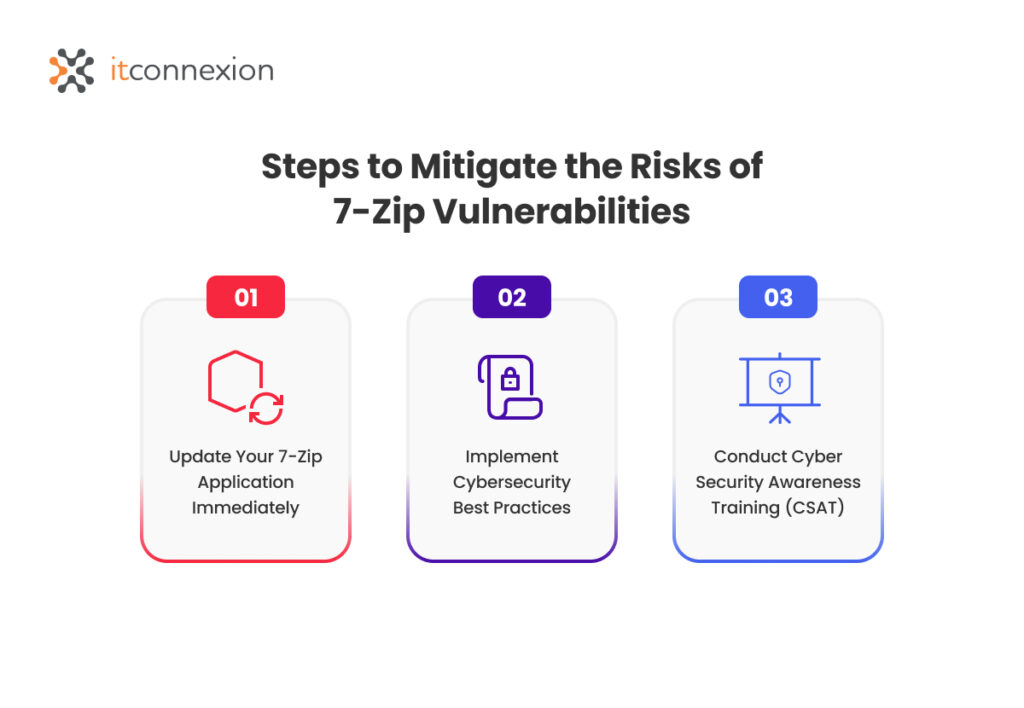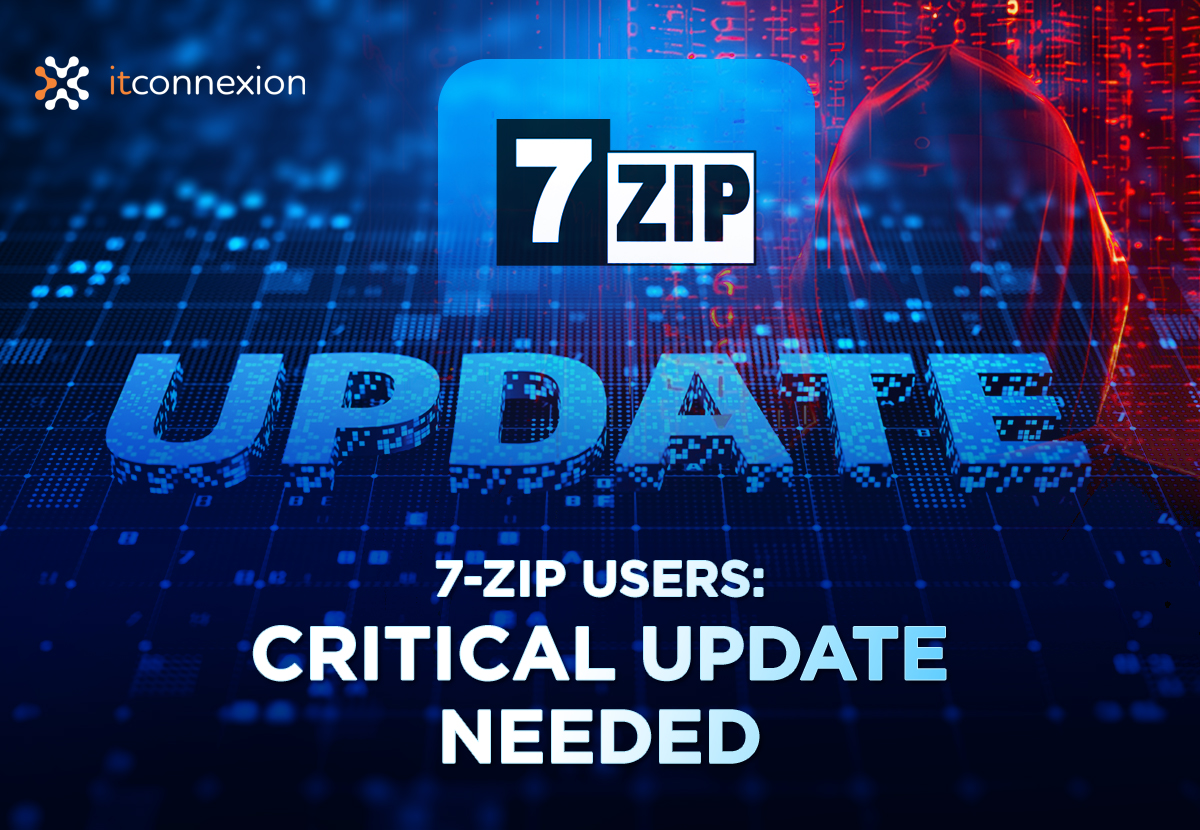Your 7-Zip application might expose your system to critical vulnerabilities, posing serious security risks. If you’re using 7-Zip, updating the app manually is essential. Due to newly discovered vulnerabilities, this widely used file compression tool has recently been identified as a potential entry point for attackers.
By addressing these issues and enhancing your organisation’s overall security posture, you can protect sensitive data and ensure operational continuity.
Real-Life Scenario: The Cost of Overlooking Software Vulnerabilities
Imagine an organisation employee unknowingly opening a malicious archive using an outdated 7-Zip version. The file is designed to exploit an unpatched vulnerability, granting unauthorised access to an attacker. The attacker may then exfiltrate sensitive data, introduce malware into your system, or disrupt critical business operations.
This highlights the real-world implications of failing to address software vulnerabilities promptly. A combination of proactive patching and Cyber Security Awareness Training (CSAT) can help prevent such scenarios.
Assessing the Impact of 7-Zip Vulnerabilities
Recent discoveries have identified critical vulnerabilities in 7-Zip, specifically an integer underflow flaw affecting all versions prior to 24.07. This flaw results from improper validation of user-supplied data and poses a significant security risk. Key details are as follows:
- Severity: CVSS (Common Vulnerability Scoring System) score of 7.8 (High), indicating substantial potential impact.
- Potential Exploits:
- Remote Code Execution (RCE): Attackers can execute malicious code on your system.
- Denial of Service (DoS): Your system may become unresponsive, causing operational disruptions.
- Risk Exposure:
- Attackers can exploit the vulnerability by convincing users to open malicious archive files.
- This can lead to unauthorized access and control over affected systems.
These vulnerabilities aren’t minor issues; they can enable attackers to disrupt your activities, compromise your system, or take control, making prompt action essential.
Steps to Mitigate the Risks

1. Update Your 7-Zip Application Immediately
Ensure you are running the latest version of 7-Zip to eliminate security vulnerabilities.
- Check Your Version: Go to Help > About 7-Zip within the application to confirm your current version.
- Download the Latest Release: Visit the official 7-Zip website and install version 24.07 or later.
- Verify Update Success: Revisit the Help menu post-installation to confirm the update.
2. Implement Cybersecurity Best Practices
- Be Cautious with Files: Avoid opening files or archives from unknown or untrusted sources.
- Enable Antivirus Protection: Use updated antivirus and anti-malware tools to detect potential threats.
- Back-Up Data Regularly: Secure critical business data to mitigate the impact of any breaches.
3. Conduct Cyber Security Awareness Training (CSAT)
While patching vulnerabilities is vital, CSAT is a crucial layer of defence.
Why CSAT Matters:
- Empower employees to identify threats such as phishing emails, malicious attachments, and social engineering attempts.
- Educates users on recognising suspicious files and securely handling them.
- Reduces the risk of human error, often the weakest link in organisational security.
By integrating CSAT, your employees will be equipped to act as the first line of defence against cyber threats, complementing technical measures like patches and updates.
Enhancing Security Posture: A Practical Application
In a real-world example:
- Risk Identification: A company identifies the 7-Zip vulnerability during a routine IT audit.
- Mitigation: IT updates all systems to the latest version of 7-Zip using a centralised patch management tool.
- CSAT Rollout: Employees undergo training to recognise phishing attempts and suspicious files.
- Monitoring: IT monitors logs and scans systems for potential signs of exploitation pre- and post-update.
Additional Protective Measures
- Secure Configuration: Disable unnecessary features in applications like 7-Zip to limit attack surfaces.
- Multi-Factor Authentication (MFA): Strengthen account access security.
- Policy Implementation: Regularly update cybersecurity policies to reflect emerging threats and solutions.
How do I update 7-Zip to fix the vulnerability?
- For ITC Clients:
- We will handle the software upgrades for all your computing devices.
- We will provide updates and reports on any non-compliant devices
- For those who have not used an IT service provider yet, please follow the instructions in the article for devices not managed by your IT provider.
Addressing 7-Zip vulnerabilities is a critical step in securing your digital environment. Combining technical actions, such as patch management, with organisational measures like Cyber Security Awareness Training (CSAT) can significantly reduce risks. If you need help securing your IT system, ITConnexion is here to support your organisation. Contact us today!





